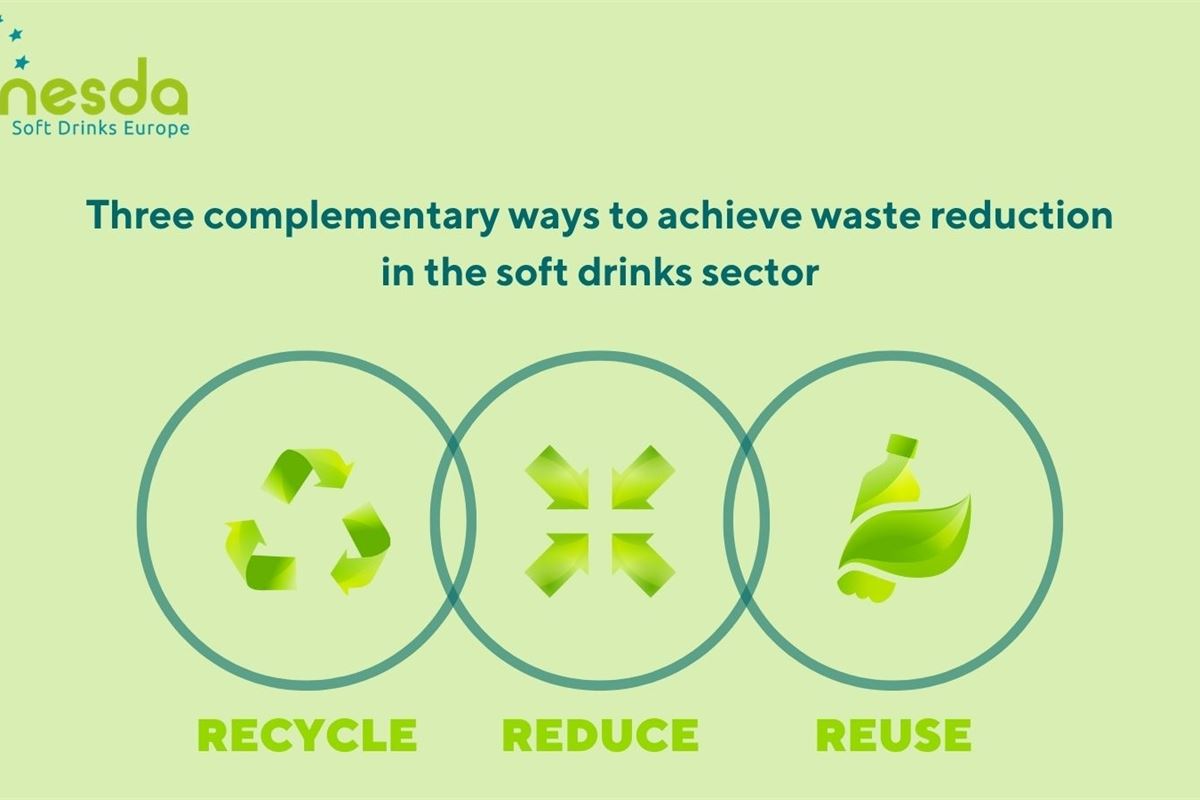
Will the European Commission create with the revised EU Packaging and Packaging Waste Directive (PPWD) the supportive policy conditions that can help us build a circular future for our beverage packaging?
What if it doesn’t? Frankly, it will be alarming as it will create unintended consequences, including the use of more virgin plastic.
That’s why we need to get the revised EU PPWD right.
Policy coherence and supportive policy measures are key to enabling us to make our packaging fully circular
To reduce the environmental footprint of our packaging and contribute to the EU’s goals to prevent packaging waste, we are taking a broad range of actions to reach fully circular beverage packaging by 2030.
We have made ambitious circularity commitments based on three pillars: collection, recycling and reuse. The reality is that we can only deliver on them with the right policy enablers, and the revised EU PPWD offers that opportunity.
Regarding collection, to achieve 90% collection of all our beverage packaging, we need efficient waste collection systems like Deposit Refund Systems (DRS) to be further rolled-out, particularly in countries without efficient waste collection schemes. Every DRS has to be efficient and offer convenience to consumers, that’s why setting EU minimum requirements for new DRS is indispensable.
As regards recycling, we are also going beyond EU requirements. We aim to use PET bottles containing at least 50% of recycled content by 2025 and made of 100% recycled and/or renewable material by 2030.
How can we get there? The high-quality recycled PET coming from our bottles is ‘’fit for being kept in a closed-loop recycling system for food contact materials’’ as recognized by the EU Strategy for Sustainable and Circular Textiles. We can indeed only enable circularity if this PET is used in new bottles rather than being downcycled into products like clothing and tires.
68% of our PET bottles are turned into non-food applications, including textiles, making it impossible for us to recover and recycle them back into new bottles. The severe shortage of food-grade PET puts at risk the EU mandatory recycled content targets. The solution is to create a legal mechanism that grants manufacturers of products using contact sensitive packaging priority access to the high-quality recycled material issued from the packaging they put on the market and which was successfully collected. This is just fair, as we finance the collection of our packaging and can only use that material quality to meet EU food safety requirements.
Finally, concerning reuse, we aim to increase our offer of reusable beverage systems as it is our conviction that reducing, recycling and reusing packaging are the three complementary pillars of circularity for beverage packaging (they are not mutually exclusive).
However, let’s not forget our end goal here: any reuse target should be based on a thorough environmental and cost impact assessment to ensure that reusable beverage systems are only put in place where they make sense for our environment and are cost-efficient. The SUPD has told industry to invest massively into recyclability and recycling. Pushing a shift now of its entire portfolio to reusable systems, without a proper assessment, lacks policy coherence and will lead to the dismantling of highly efficient recycling systems. Does it even make sense? Why shifting entirely towards reusable packaging when by 2030 we will have already created fully recyclable packaging that is not wasted and has lower environmental footprints?
This is the moment to help us close the loop
The revision of the EU PPWD gives us a real opportunity to create a supportive legal framework that enhances the immense potential of our packaging.
Through close collaboration we can accelerate the transition to a circular economy for beverage packaging and, more importantly, make it the right way.
Bagikan Berita Ini














0 Response to "Fully circular beverage packaging is already a reality: Don't destroy it - The Parliament Magazine"
Post a Comment